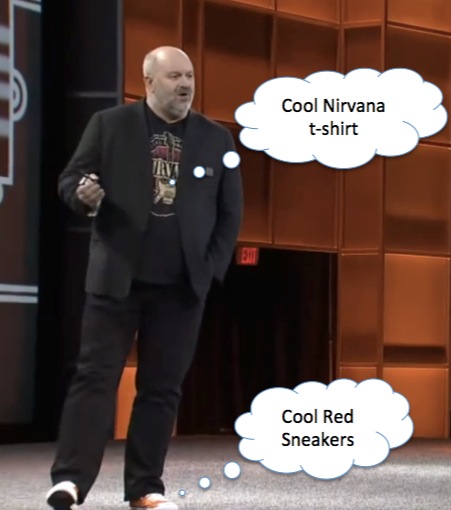5 Tech Books I Couldn’t Bear to Throw Away
By Petar Marinkovic, CTO, IOD The longest summer break for me was the one between high school and university. At that point in life, we’re still too young and unaware…
By Petar Marinkovic, CTO, IOD The longest summer break for me was the one between high school and university. At that point in life, we’re still too young and unaware…
NEXT WORKSHOP: APRIL 25, 2018
Have you always wanted to start a tech blog, but worry you can’t write well or, worse, fear you don’t truly have anything important to say? Well, you can and do. More and more technology experts — from programmers to data architects to operations engineers — are researching and developing original content, and getting paid for it!
(more…)
By Petar Marinkovic, IOD Senior Expert and Mentor
 When you are a freshly employed junior in IT, a few certification acronyms look nice on your CV. You don’t have too many projects under your belt, so passing a couple of Microsoft, Cisco, or AWS exams will definitely help you in pursuing and obtaining positions that will kickstart your career. But, when should you stop? When is enough enough? And once you’ve decided it’s enough, and you have more free time, what’s the best way to spend that time in a way that will support your continued growth?
When you are a freshly employed junior in IT, a few certification acronyms look nice on your CV. You don’t have too many projects under your belt, so passing a couple of Microsoft, Cisco, or AWS exams will definitely help you in pursuing and obtaining positions that will kickstart your career. But, when should you stop? When is enough enough? And once you’ve decided it’s enough, and you have more free time, what’s the best way to spend that time in a way that will support your continued growth?
I have to admit, I was a member of the “certification” cult.
(more…)
 The AWS cloud is here to stay. That’s a fact that is not solely attributable to its famed CTO, Dr. Werner Vogel’s, charisma. It is rather due to AWS creating its own destiny for success. This is thanks to a couple factors in particular, namely, an ideal pace of innovation and a positive and highly innovative product and marketing atmosphere (aka evangelism).
The AWS cloud is here to stay. That’s a fact that is not solely attributable to its famed CTO, Dr. Werner Vogel’s, charisma. It is rather due to AWS creating its own destiny for success. This is thanks to a couple factors in particular, namely, an ideal pace of innovation and a positive and highly innovative product and marketing atmosphere (aka evangelism).
There is no doubt that the cloud put Amazon CEO, Jeff Bezos, in the position to fill what used to be Apple’s shoes. What is interesting, though, is that he used those shoes to mosey on over to IT’s doorstep.
In this post series, I will raise some basic questions and will delve deeply into this topic to debate the common resistance to what I call “pure cloud deployment”.
Let’s begin with a leading question: Can’t the hybrid economy model live within the public cloud? From the enormous number of conversations with top cloud thought leaders, CIOs, startups, and the like, it seems that the answer is YES.

(more…)
 The IT capacity plan is derived from the current and future resources utilization for holding, storing and accommodating the software services. It is a given fact that servers’ average utilization in the traditional data center is between 5% and 20%. By contract, when planning capacity in the cloud, the basic working assumption is that, utilization should match the demand at all times and support temporary demand peaks and future trends.
The IT capacity plan is derived from the current and future resources utilization for holding, storing and accommodating the software services. It is a given fact that servers’ average utilization in the traditional data center is between 5% and 20%. By contract, when planning capacity in the cloud, the basic working assumption is that, utilization should match the demand at all times and support temporary demand peaks and future trends.
Capacity planning is described by Wikipedia as the
“process of determining the production capacity needed by an organization to meet changing demands for its products.” It is also given by the following formula:
(number of machines or workers) × (number of shifts) × (utilization) × (efficiency)
In his CIO’s article about cloud computing capacity, Bernard Golden wrote,
(more…)